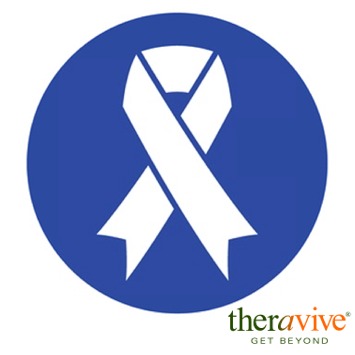 Child abuse and neglect are a serious problem for our country. An estimated 679,000 were victims of abuse in 2013 and 1,484 died as a result (Administration on Children, Youth and Families, Childrens Bureau). Behind this number are countless other children keeping the secret of their parents. The problem of abuse does not end as the person ages. Children who are abused and neglected often experience dysfunction as an adult. These children have an increased risk for neurological, cognitive, and psychological difficulties (Child Welfare Information Gateway, 2010).
Child abuse and neglect are a serious problem for our country. An estimated 679,000 were victims of abuse in 2013 and 1,484 died as a result (Administration on Children, Youth and Families, Childrens Bureau). Behind this number are countless other children keeping the secret of their parents. The problem of abuse does not end as the person ages. Children who are abused and neglected often experience dysfunction as an adult. These children have an increased risk for neurological, cognitive, and psychological difficulties (Child Welfare Information Gateway, 2010).
Physical Problems Due to Childhood Abuse
For some children, their physical damage will only be temporary, such as a bruise. Other children, are not so lucky and will grow up with long lasting and permanent problems as a result of their abuse. Abusive head trauma, such as from being hit in the head or from being shaken, is very serious. One in four of the children who experience head trauma will die from their injuries and nearly all of the children experience health difficulties (Child Welfare Information Gateway, 2010). Child abuse and neglect also impact brain development. When the neurodevelopment is affected the children may experience difficulty with cognition, language, and academic abilities (Tarullo, 2012). Adults who were abused when they were children are more likely to have cardiovascular, lung, liver, hypertension, diabetes, asthma, and obesity difficulties (Felitti & Anda, 2009). There are brain differences among abused children compared to the nonabused. The corpos callosum portion of the brain is sometimes smaller in abused children (De Bellis, et al., 2002), for example. The corpus callosum integrates the two brain hemispheres. When there is poor integration there is difficulty with emotion regulation, cause-effect thinking, and recognizing emotion. When there are high levels of neuroendocrine hormones, the hippocampus can be permanently damaged (Lombroso & McEwen, 1999).
Psychological Problems Due to Childhood Abuse
Often children will continue to be haunted by their abuse into their adult years and will experience psychological problems. Parents who neglect or abuse their children, negatively affect brain development of the child. Almost half of all infants in foster care who were maltreated show signs of language problems, cognitive delay, or lower IQ (Zero to Three, 2011). Children who are abused will start to focus on survival and because the brain's fear response brain regions are so frequently activated, the other areas are less activated and, therefore, complex thought is neglected (Perry, 2001). Abused children can experience a persistent fear state and may overreact to triggers due to hyperarousal (Child Trauma Academy, n.d).
Adults abused as children experience more anxiety, depression, and higher suicide rates. The more the children are abused the more extreme their symptoms (Perez-Fuentes, 2013). One study found that 54 percent of women with depression and 58 percent of women who attempted suicide experienced a difficult childhood (Felitti & Anda, 2009). Male children who have more than six adverse childhood experiences have a 4,000 percent increased likelihood of using IV drugs in the future (Felitti & Anda, 2009). Abused children also learn to "zone out" of the abuse and continue the dissociate into adulthood. Sexually abused children have twice the risk of developing an anxiety disorder, three times the average of major depression, three times the risk of alcohol abuse, four times the average of drug abuse, and four times the average of developing antisocial behavior (Macmillan, 2001).
Preventing Abuse
Research tells us that when parents have more knowledge about child development and skills that abuse decreases. We know that when the parent is attached and nurtures their child there is less likelihood of abuse (Making Meaningful Connections, 2015). Public awareness and education is very important to the prevention of child abuse. A good example of this is the purplecrying.com website. This website is designed to educate new parents about shaken baby syndrome. The website, for example, gives ideas of soothing methods to help calm a crying baby. The Child Welfare Information Gateway lists several public awareness activities and programs at https://www.childwelfare.gov/topics/preventing/communities/activities-programs/.
Parent education programs can help with learning different forms of discipline and how to handle anger outbursts. The Center for the Study of Social Policy developed a model for reducing child abuse and neglect and in the process discovered factors associated with a reduced risk for abuse. These factors are nurturance and attachment, knowledge about parenting and child development, parental resilience, social connections, concrete support services, and social/emotional competence of children.
Abusive and neglecting parents often do not display empathy and nurturance. It is important that parents understand how to have an empathic relationship with their children. Examples include learning to soothe children to calm rather than hit, learning how to comfort, manage feelings, and keep children safe (Nurturing Parenting, 2012).
Parents who have good parenting skills are less likely to abuse. Skills include behavior management (such as redirection, ignoring, time-out, and loss of privileges). These parents also encourage good behavior through methods such as praise and nurturing touch. Abusive parents sometimes expect too much of their children and can benefit from learning ages and stages of development (Nurturing Parenting, 2012).
Resiliency is being able to handle stress and recover from it. Insight into upbringing and personal history is one way to aid in the development of resilience. Parents need to learn how to appropriately release their anger, self-awareness, and empowerment (Nurturing Parenting, 2012).
April is Child Abuse and Neglect Awareness Month
For the past 32 years, child abuse awareness activities have been planned for and participated in April. April is Child Abuse Awareness month. Forty years ago in 1974, President Nixon signed the first federal child protection legislation (Child Welfare, 2015). In 1983, President Reagan proclaimed April to be National Child Abuse Prevention month.
The symbol of the blue ribbon used to represent child abuse prevention first appeared in 1989. The blue ribbon was originally used in remembrance by a grandmother, Bonnie Finnie, of her abused and murdered grandchildren. She had tied a blue ribbon to her vehicle antenna. When interviewed by the media she said that she chose blue because the color of bruises the children experience. Based on Pinwheels for Prevention® campaign, some cities distribute pinwheels to represent children affected by abuse or neglect in their area.
Childwelfare.gov has a calendar of activities for every day of April that promote child well-being. The calendar can be found and downloaded at https://www.childwelfare.gov/pubPDFs/calendar_en-2015.pdf
There are many ways to become involved with Child Abuse Prevention Month including buying a child abuse prevention specialty license plate, participating in Court Appointed Special Advocate (CASA) volunteer efforts, build a pinwheel garden in your yard, or write a letter to the editor of your local newspaper.
References
Anda, R., Fleisher, V., Felitti, V., Edwards, V., Whitfield, C., Dube, S., & Williamson, D. (2004). Childhood abuse, household dysfunction, and indicators of impaired adult worker performance. Permanente Journal, 8 (1). Retrieved from http://xnet.kp.org/ permanentejournal/winter04/childhood.pdf
Child Trauma Academy. (n.d.). The amazing human brain and human development. Retrieved March 29, 2015 from www. childtraumaacademy.com/amazing_brain/ index.html
Child Welfare.(n.d.). About. Retrieved March 30, 2015, from https://www.childwelfare.gov/topics/preventing/preventionmonth/about/
Center for the Study of Social Policy (CSSP). 2003. www.cssp.org
De Bellis, M. D., Keshavan, M. S., Shifflett, H., Iyengar, S., Beers, S. R., Hall, J., & Moritz, G. (2002). Brain structures in pediatric maltreatment-related posttraumatic stress disorder: A socio-demographically matched study. Biological Psychiatry, 52(11), 1066–1078.
Family Files - U of I Extension. (n.d.). Retrieved March 31, 2015, from http://web.extension.illinois.edu/hkmw/eb380
Felitti, V. J., & Anda, R. (2009). The relationship of adverse childhood experiences to adult medical disease, psychiatric disorders, and sexual behavior: Implications for healthcare. In R. Lanius, E.Vermetten, & C. Pain (Eds.), The hidden epidemic: The impact of early life trauma on health and disease. Retrieved March 29, 2015 from http://www.unnaturalcauses.org/assets/uploads/file/ACE%20Study-Lanius.pdf
Lombroso, P., & Mcewen, B. (1999). Development of the Cerebral Cortex: XIII. Stress and Brain Development: II. Journal of the American Academy of Child & Adolescent Psychiatry,38, 101-103.
Macmillan, H. (2001). Childhood Abuse and Lifetime Psychopathology in a Community Sample. American Journal of Psychiatry, 158(11), 1878-1883.
Making Meaningful Connections. (n.d.). Retrieved March 30, 2015, from https://www.childwelfare.gov/pubpdfs/guide.pdf
Nurturing Parenting. (2012, January 1). Retrieved March 31, 2015, from http://www.nurturingparenting.com/
Perry, B.D. (2001a). Violence and childhood: How persisting fear can alter the developing child’s brain . Retrieved March 29, 2015 from https://childtrauma.org/wp-content/uploads/2013/11/Neurodevel_Impact_Perry.pdf
Pérez-Fuentes, Gabriela, et al. (2013). Prevalence and correlates of child sexual abuse:A national study. Retrieved March 29, 2015 from http://www.ncbi.nlm.nih.gov/pmc/articles/PMC3518746/
Public Awareness Activities and Programs. (n.d.). Retrieved March 30, 2015, from https://www.childwelfare.gov/topics/preventing/communities/activities-programs
Tarullo, A. (2012). Effects of child maltreatment on the developing brain. CW360˚. Retrieved March 29,2015from http://www.bu.edu/cdl/files/2013/08/Tarullo-CW360-2012.pdf
U.S. Department of Health and Human Services (DHHS) Children’s Bureau. (2010).Child Welfare Information Gateway. Retrieved March 29 2015 from https://www.childwelfare.gov/pubpdfs/long_term_consequences.pdf
What is the Period of PURPLE Crying? (n.d.). Retrieved March 30, 2015, from http://www.purplecrying.info/
Zero to Three. (2011). A call to action on behalf of maltreated infants and toddlers. Retrieved on March 29, 2015 from http://www.zerotothree.org/public-policy/federal-policy/childwelfareweb.pdf
About the Author

Dr. Candice Hopper-Owrey
, Candice Hopper-OwreyCandice Hopper-Owrey is Licensed Professional Counselor. At her private practice in Springfield Missouri,Candice specializes in trauma work and grief therapy. She also loves leading group therapy. She has 2 children and has been married for 12 years. She works with children, adolescents, and adults. Her website is www.hopeofmo.com
Office Location:
1722 S Glenstone, Suite W112B
Springfield, Missouri
65807
United States
Phone: 4175011205
Contact Dr. Candice Hopper-Owrey
Professional Website:
www.hopeofmo.org